- Yokohama-shi Top Page
- Living and Procedures
- Community Development and Environment
- Rivers and sewers
- Sewer
- Connection to the sewer
- Rainwater infiltration
- Efforts for the restoration of a healthy water environment!
Here's the text.
Efforts for the restoration of a healthy water environment!
Last Updated May 13, 2024
In order to promote the installation of "Rainwater Infiltration Masu", we have been examining penetration effects experiments.
1 Results of experiments on penetration effects
(1) Effect of rainwater penetration masu
Amount of penetration
The amount of penetration of rainwater infiltration masu was 8.3 to 14.4 liters per minute as shown in Table 1.
For example, 10% of heavy rain (rain that bounces from the road sideways)
I think it will have some effect.
| Experiment No | Experiment site | Targets | Permeable amount (L/min) |
|---|---|---|---|
| 1 | Miyazawa Kaikan | Diameter: 300mm | 12.3 |
| 2 | Miyazawacho Neighborhood Hall | Diameter: 300mm | 14.4 |
| 3 | Diameter: 150mm | 8.3 |
Penetration effect
As the effect of rainwater infiltration, it was confirmed that the amount of rainwater soaks into the ground increases, reducing the amount that flows into the river during heavy rain, and preventing flooding. In addition, groundwater increases and the amount of spring water and rivers increases, which helps to regenerate the water cycle.
(2) Infiltration range of rainwater infiltration masu (understanding the impact on buildings)
The penetration range of rainwater infiltration masu was within 30 cm from the outside of the crushed stone of rainwater infiltration masu.
Regarding the concerns of moisture to the building that you asked in the questionnaire, the rise in soil moisture within the range of 30 cm from the outside of the crushed stone of penetration is only about 4%, and it is considered that there is almost no effect on the building. So don't worry.
2 Experiment method
(1) The amount of penetration of rainwater infiltration masu
The water was poured into the rainwater infiltration masu, and the amount of water supplied until the water level reached a certain level. Table 1 shows the amount of penetration at each experimental site when the amount of water supplied was set as “permeable amount”.
(2) Infiltration range of rainwater infiltration masu (understanding the impact on buildings)
We conducted an experiment to reproduce the time of rainfall and examined the impact on the building.
In this experiment, we assumed the rainfall of 20mm / day and 10mm / hour, which account for more than 90% of the rainfall in one year, and were able to grasp and confirm the following.
- The rise of soil moisture within 30 cm from the outside of the crushed stone of rainwater infiltration masu was only about 4%, and it recovered to its initial state after about 30 minutes after the experiment.
- The soil moisture on the ground (about 5 cm) was 60% of the general saturation state.
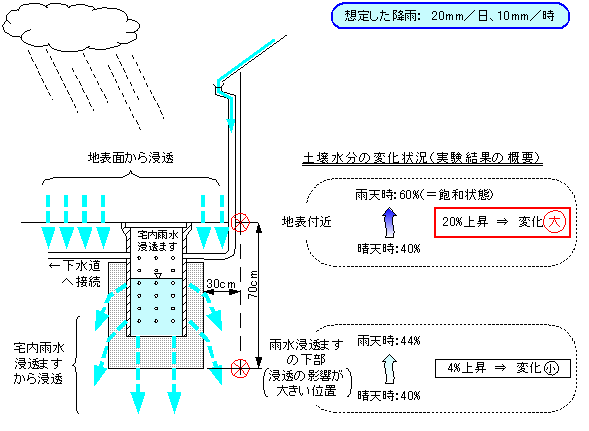
(3) Simple confirmation method (infiltration status of rainwater penetration masu)
The experiment described in the preceding paragraph takes time with equipment, equipment, and time, but if you try using the next experiment method, you can confirm the rough penetration effect.
Simple experiment method of penetration effect
You can see the water pumped into the bucket flowing into the rainwater penetration masu, and the water penetrates. However, if it continues to rain, the penetration capacity will decrease, so the ability of simple experiments will not continue.
- Prepare a bucket and draw water.
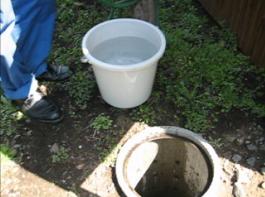
- Water is poured into the rainwater penetration masu.
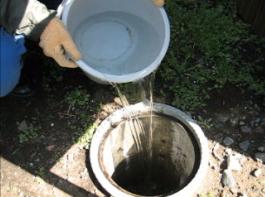
- At first, most of the water penetrates.
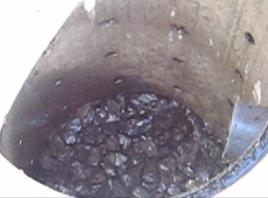
- Over time, water begins to accumulate at the bottom of the masu.
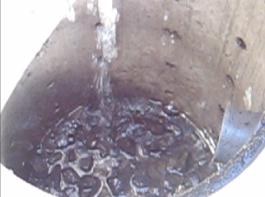
3 Initiatives in Fiscal 2006
We revised rainwater infiltration facility setting standard to affect Yokohama-shi rainwater infiltration masu setting summary to plan setting promotion of house rainwater infiltration masu.
Major revisions
- In order to make it easier to install on limited residential premises, small (lightweight) rainwater infiltration facilities have been added to the standards.
- As a general rule, we decided to secure a separation of about 30 cm for buildings, etc.
- The setting criteria have been clarified, such as basically utilizing the "infiltration facility setting judgment map".
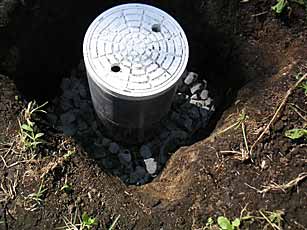
Installation status of small rainwater penetration masu
Yeah
Thank you for your cooperation in promoting the installation of rainwater penetration masu. We will continue to strive to install rainwater penetration masu, so we ask for your continued understanding and cooperation.
Inquiries to this page
Sewerage River Bureau Management Promotion Department Management Promotion Section (plan)
Telephone: 045-671-2838
Telephone: 045-671-2838
Fax: 045-664-0571
Email address: gk-management@city.yokohama.lg.jp
Page ID: 342-970-477







